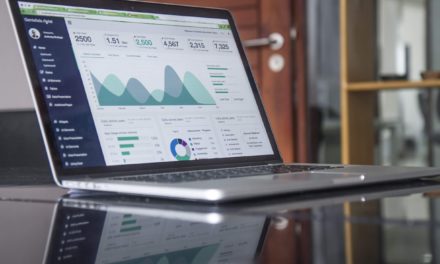With third-party cookies doling out their last crumbs until Cookiepocalypse implodes in 2023, first-party data will become more important than ever. Why? Without all the great third-party data that comes from those little cookie crumbs, you’ll be left to mine customer insights from your own sites to create your marketing strategy.
While a cookieless future may initially strike fear into the hearts of every marketer, it’s actually a good thing. (Not if you’re talking the chocolate chip kind, but that goes without saying.)
When gathering first-party data across your digital properties—like company website, email marketing and social platforms—you’re in control. We all remember the game of telephone, right?
By the time the message gets to the end of the line, it’s skewed from what was initially said. Same with data. The first-party kind is arguably more reliable (ie., valuable) because it comes directly from observing your own customers. Not only can you glean important demographic info, you can also learn what they’re browsing, for how long and so much more. And all this good stuff starts by looking at buyer intent.
Intent marketing as the (not so) secret ingredient
At its most basic level, intent marketing is marketing a product or service based on customer intent to make a purchase decision. This doesn’t necessarily mean the point when they break out their credit card, PayPal, Venmo—or hell, even their crypto—to actually pay for said product. It’s about examining their online behavior and actions (aka, their purchase intention) along the entire buyer journey and giving them what they want when they want it.
By analyzing data sources, you can identify trends—for example, recurring search queries—that ultimately lead to conversion. By conversion, think: purchase, appointment, newsletter sign-up—any type of action you want your potential customer to take.
But getting to that action is not always a straight path. Take this startling stat: When researching new products or services, B2B buyers make an average of twelve online searches before actually engaging with any vendors.
Look at your own personal search habits. How often do you whip out your phone and expect Siri to provide an immediate answer to a question you ask? You might start broad, then hone in with each succeeding query. For instance, “chocolate chip cookie ingredients” may eventually lead to “grocery store near me” as your intent to purchase moves through the buyer’s journey.
Same is true for your (potential) customers, so it’s important to build out marketing strategies with buyer intent top of mind.
Start with an Intent Data Profile
The data you collect will tell you which target accounts are ready to interact with you or make a purchase—and also points you toward potential new accounts to pursue. Out of the total addressable market (TAM) for your product/service, these target accounts are your priority since they have the highest chance to convert based on their online behavior.
Their actions drop little nuggets of gold your marketing team can use to craft a content strategy filled with real, targeted solutions. It’s this type of personalized content that customers crave, which makes the job easier for the sales team. (Don’t tell them I said that.)
Use intent signals to guide you
By tracking the intent signals of your customers in terms of what, when and how they search, you can discover in-the-moment insights—like increased activity around a particular topic or multiple views of a specific product. This real-time intel is crucial stuff in terms of the type of content you whip up. But it’s what happens next that separates the master chef from the line cook.
A master chef will fold this great info in with all the other customer demographic data to target with purpose. Because targeting the right audience at the right time with the right content far outweighs demographics alone. This, my friends, is key to your content marketing success.
When building out your content strategy, it’s important to use intent data to inform every aspect of your plan, including:
- Content theme: make it well-timed and seasonally appropriate. I mean, you wouldn’t promote a 4th of July sale at Christmastime, would you?
- Content quality: solution-oriented content aimed at your customers is far more valuable than clicks and searches yielding poor results.
- Buyer personas: by defining your ideal customers, you can flesh out their needs and pain points.
- Content details: will it be a video or blog? Infographic or podcast? Match your content to your format, then match your call to action to the buyer’s stage. There’s nothing worse than a premature CTA to turn off customers.
- SEO strategy: let’s be frank, SEO should anchor your content. But that doesn’t mean keywords for the sake of keywords (more below). Today’s savvy marketers understand the importance of quality content and toe the line between search engines and human behavior.
Make the most of your keywords
Google Ads is a great place to start when researching keywords (plus a whole host of other platforms like Semrush and Moz). You can look up relevant keywords, see how competitive they are, plus how high or low they rank. But keep in mind this should be only part of your overall keyword research.
It’s also a good idea to run your own Google searches by typing in phrases you would look for, then seeing what auto populates. Taking this extra step could yield keyword variations and long-tail keywords that are more specific to your search. Remember, search intent trumps keywords and synonyms every time, so intent keywords are where it’s at.
Kick it up a notch with intent data software
With great data comes great responsibility. But what happens if your company has limited time and resources for analyzing the gathered data? Well, then, contract the job out to a company that specializes in just that.
Companies like Zoominfo, MRP, Bombora and TechTarget use intent marketing software to dig deep into your customers’ digital footprints. They collect data related to website visits, white paper downloads, product reviews and all other relevant bits of info.
Then, they use algorithms and predictive analytics to detect patterns in behavior and consolidate it all into a useful marketing playbook for you. By contracting out to intent data service companies, small businesses can level the playing field with the big guys. Talk about money well spent!
The future of marketing is today
Third-party cookies are so yesterday. Intent-based marketing provides a more delicious recipe for your marketing efforts in 2022 and beyond. And the data that companies collect will only increase over time. Algorithms will improve, to interpret the data better.
Intent marketing is a long game, so make sure you’re prepared: keep your eye on your customers, pivot with your findings, take advantage of data tools, and deliver quality content every time.











